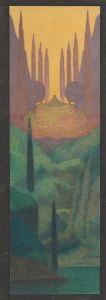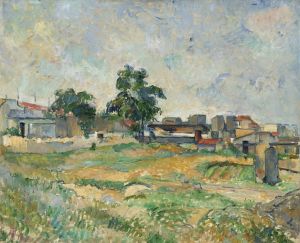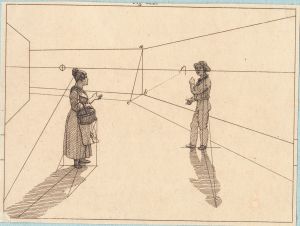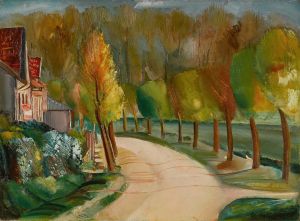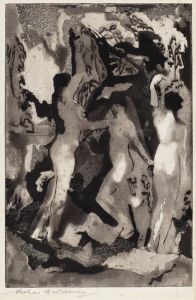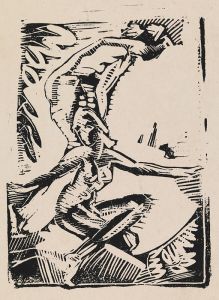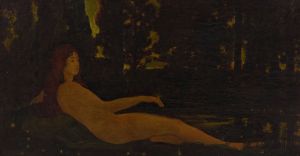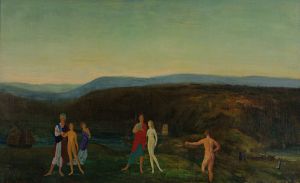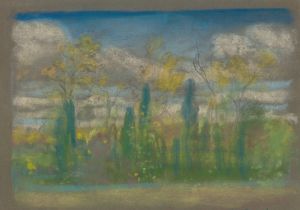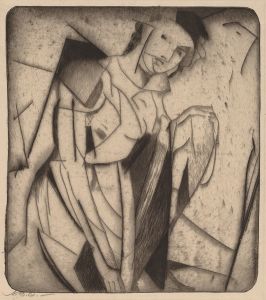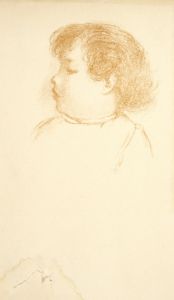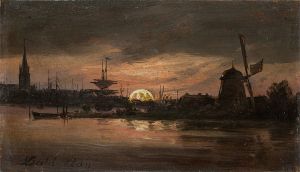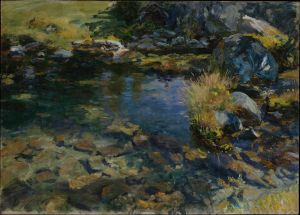
Pastoral Dells and Peaks
A hand-painted replica of Arthur Bowen Davies’s masterpiece Pastoral Dells and Peaks, meticulously crafted by professional artists to capture the true essence of the original. Each piece is created with museum-quality canvas and rare mineral pigments, carefully painted by experienced artists with delicate brushstrokes and rich, layered colors to perfectly recreate the texture of the original artwork. Unlike machine-printed reproductions, this hand-painted version brings the painting to life, infused with the artist’s emotions and skill in every stroke. Whether for personal collection or home decoration, it instantly elevates the artistic atmosphere of any space.
Arthur Bowen Davies was an American artist known for his contributions to the American modernist movement in the early 20th century. His work often bridged the gap between traditional and modern art, and he played a significant role in introducing European modernism to American audiences. One of his notable works is "Pastoral Dells and Peaks," which exemplifies his unique style and thematic interests.
"Pastoral Dells and Peaks" is a painting that reflects Davies' fascination with idyllic landscapes and the harmonious relationship between nature and humanity. His work often depicted serene and dreamlike scenes, and this painting is no exception. The composition typically features rolling hills, gentle peaks, and lush dells, capturing a tranquil and almost otherworldly atmosphere. Davies' use of soft colors and fluid brushstrokes contributes to the ethereal quality of the scene, inviting viewers to immerse themselves in the peacefulness of the natural world.
Arthur B. Davies was born in Utica, New York, in 1862. He studied at the Art Institute of Chicago and the Art Students League in New York, where he developed his skills and began to form his artistic vision. Throughout his career, Davies was associated with several art movements, but he is perhaps best known for his involvement with The Eight, a group of American artists who challenged the conservative art establishment of the time. Although The Eight were primarily known for their urban realism, Davies' work stood out for its romantic and mystical qualities.
Davies was also a key figure in organizing the 1913 Armory Show, which was the first large exhibition of modern art in America. This event was crucial in introducing American audiences to European avant-garde artists such as Pablo Picasso and Marcel Duchamp. While Davies' own work was more subdued compared to the radical styles of some of his European contemporaries, his efforts in promoting modern art were instrumental in shaping the direction of American art in the 20th century.
"Pastoral Dells and Peaks" embodies Davies' interest in creating a sense of timelessness and universality through art. His landscapes often evoke a sense of nostalgia and longing for a simpler, more harmonious existence. This painting, like many of his works, can be seen as a reflection of his desire to escape the complexities and industrialization of modern life, offering instead a vision of beauty and tranquility.
Davies' artistic legacy is marked by his ability to blend traditional and modern elements, creating works that are both accessible and thought-provoking. His paintings continue to be appreciated for their aesthetic beauty and their ability to transport viewers to a serene and contemplative space. "Pastoral Dells and Peaks" remains a testament to his skill as a painter and his vision as an artist who sought to capture the essence of the natural world in a rapidly changing society.





